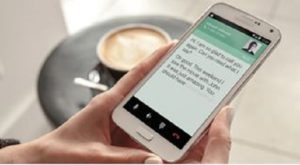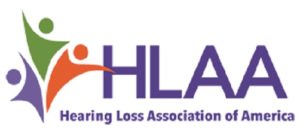Many months ago while searching for innovative hearing aids we came across a couple of new ventures whose products intended to include a capability of recognizing words and displaying them on a smartphone, but those ventures apparently have not succeed as of yet. In mid-July 2018, however, we discovered a fascinating app for the iPhone that displays text on its screen corresponding to the spoken words of the person we are speaking with. It is one of a number of products called Voice over IP.
The French founder (Olivier Jeannel) was born deaf, so was very motivated to use modern technology to compensate for his disability. His and his two-cofounders’ (CTO Sidney Burks and CMO Pablo Seuc-Rocher) efforts started in 2013, and the venture had raised 660,000 Euros as of March 2018.
Thus far anyone can apparently use the app for free. We tried it, and it worked fine. (You need a high-bandwidth Internet connection: cable, 3G, or WiFi.) We spoke only in English (except for the word Guillermo, which is Spanish for William, that was recognized).The company says that it can handle English, French, Italian, Japanese (we wonder how that looks on the screen), Polish (an interesting alternative), and Spanish. One thing that it didn’t do was to handle words that we spelled out (in English), so there may be some challenges to clarifying misunderstood words.
It will be interesting to see how the company monetizes its technology. The average price of iPhone apps is only US$4.37, which is tiny compared with the price of conventional hearing aids (which rarely work as well as RogerVoice).



